One of the many reasons

Map: geographic distribution of library holdings of al-Muqtabas
Till Grallert, Orient-Institut Beirut (OIB), @tillgrallert
3rd Online Conference of the Islamicate Digital Humanities Network (IDHN)
29 April 2020

Map: geographic distribution of library holdings of al-Muqtabas
It’s labour and resource intensive. It really is!
| periodical | doi | volumes | issues | articles | words | words per article |
|---|---|---|---|---|---|---|
| al-Ḥaqāʾiq | 10.5281/zenodo.1232016 | 3 | 35 | 389 | 298090 | 832.66 |
| al-Ḥasnāʾ | 10.5281/zenodo.3556246 | 1 | 12 | 201 | NA | NA |
| al-Manār | 35 | 537 | 4300 | 6144593 | 1437.73 | |
| al-Muqtabas | 10.5281/zenodo.597319 | 9 | 96 | 2964 | 1981081 | 873.34 |
| al-Ustādh | 10.5281/zenodo.3581028 | 1 | 42 | 435 | 221447 | 582.21 |
| al-Zuhūr | 10.5281/zenodo.3580606 | 4 | 39 | 436 | 292333 | 695.09 |
| Lughat al-ʿArab | 10.5281/zenodo.3514384 | 3 | 34 | 939 | 373832 | 485.21 |
| total | 56 | 795 | 9664 | 9311376 |
| title | articles with author (%) | authors | author.birth.avg | author.death.avg |
|---|---|---|---|---|
| al-Ḥaqāʾiq | 41.90 | 104 | 1837.53 | 1905.93 |
| al-Ḥasnāʾ | 37.31 | 50 | 1883.14 | 1947.17 |
| al-Manār | 87.14 | 356 | 1870.96 | 1913.5 |
| al-Muqtabas | 12.72 | 140 | 1855.94 | 1929.48 |
| al-Ustādh | 5.52 | 8 | NA | NA |
| al-Zuhūr | 41.51 | 112 | 1872.96 | 1939.52 |
| Lughat al-ʿArab | 16.19 | 53 | 1875.8 | 1942.1 |
والأصح الدرعية بلام التعريف (راجع <bibl subtype="journal" type="periodical">مجلة <title level="j" ref="oape:bibl:3 oclc:1034545644" xml:id="title_16.d2e2291">الزهور</title> المصرية <biblScope unit="volume" from="2" to="2">٢</biblScope> : <biblScope unit="page" from="292">٢٩٢</biblScope></bibl>)وانتخب <persName>فؤاد أفندي الدفتري البغدادي</persName> و<bibl><editor><persName>نوري أفندي</persName></editor> راس كتاب <textLang otherLangs="ota">القسم التركي</textLang> في <bibl type="periodical" subtype="newspaper">جريدة <title ref="oape:bibl:532">الزهور</title></bibl> البغدادية</bibl> نائبين عن <placeName ref="oape:place:372 geon:94824">كربلاء</placeName>.
Figure: Network of periodicals mentioned al-Ḥaqāʾiq, al-Ḥasnāʾ, Lughat al-ʿArab and al-Muqtabas; weights per issue
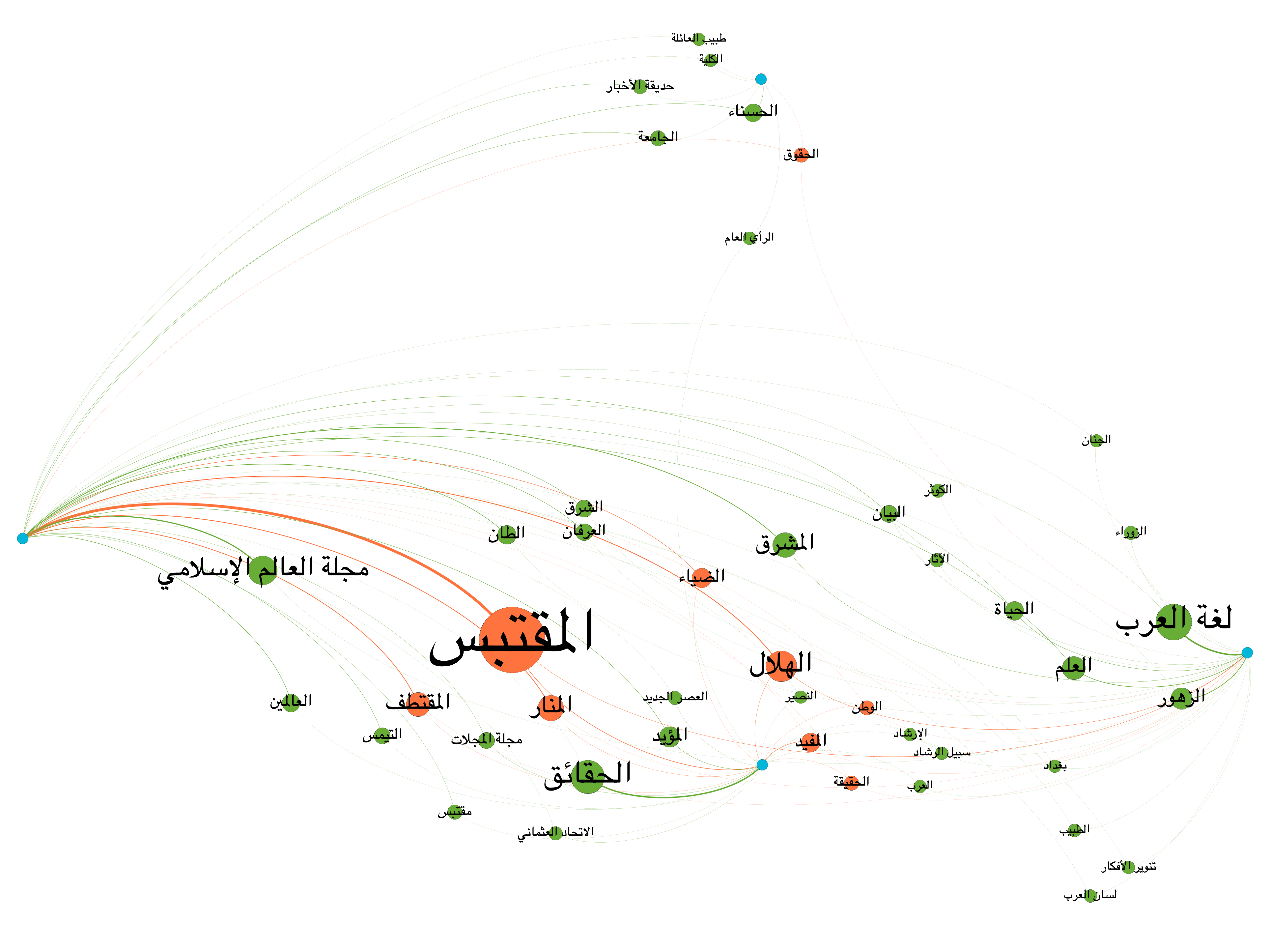
Figure: Core nodes in the network of periodicals mentioned al-Ḥaqāʾiq, al-Ḥasnāʾ, Lughat al-ʿArab and al-Muqtabas; weights per issue
<person>
<persName><roleName type="pseudonym">ساتسنا</roleName></persName>
<persName><roleName type="pseudonym">أمكح</roleName></persName>
<persName><roleName type="pseudonym">فهر الجابري</roleName></persName>
<persName><roleName type="rank">الأب</roleName> <forename>أنستاس</forename> <forename>ماري</forename> <surname><addName type="nisbah">الكرملي</addName></surname></persName>
<persName><forename>أنستاس</forename> <forename>ماري</forename> <addName type="nisbah">الألياوي</addName> <surname><addName type="nisbah">الكرملي</addName></surname></persName>
<persName><forename>بطرس</forename> <addName type="nasab">بن <forename>جبرائيل</forename></addName> <forename>يوسف</forename> <surname>عواد</surname></persName>
<idno type="VIAF">39370998</idno>
<idno type="oape">227</idno>
<idno type="wiki">Q4751824</idno>
<birth><date source="viaf" when="1866-08-05">1866-08-05</date> in <placeName ref="oape:place:216 geon:98182">Baghdad</placeName></birth>
<death><date source="viaf" when="1947-01-07">1947-01-07</date> in <placeName ref="oape:place:216 geon:98182">Baghdad</placeName></death>
</person>
Figure: Network of authors with bylines in al-Ḥaqāʾiq, al-Ḥasnāʾ, Lughat al-ʿArab and al-Muqtabas
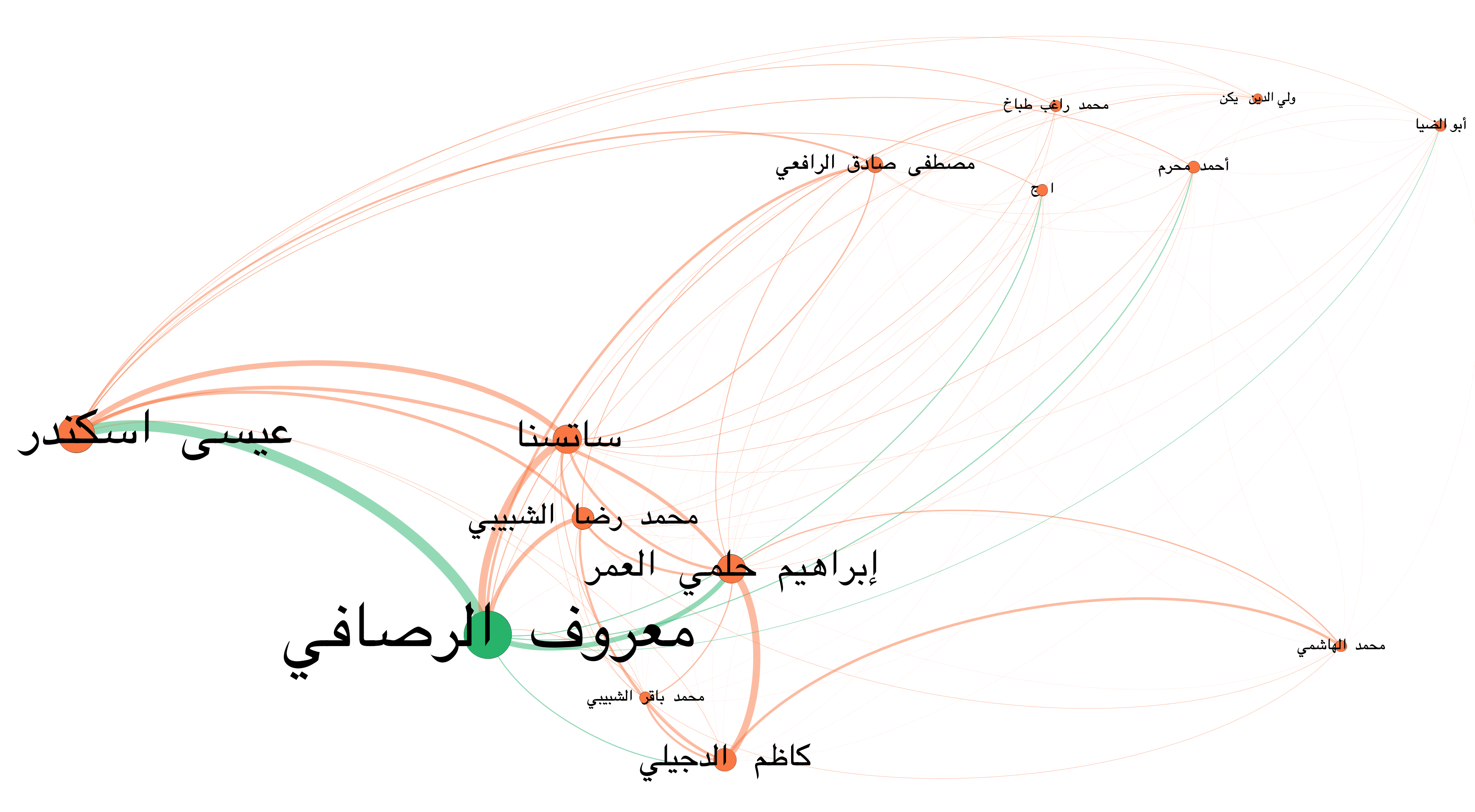
Figure: Core nodes in the network of authors with bylines in al-Ḥaqāʾiq, al-Ḥasnāʾ, Lughat al-ʿArab and al-Muqtabas
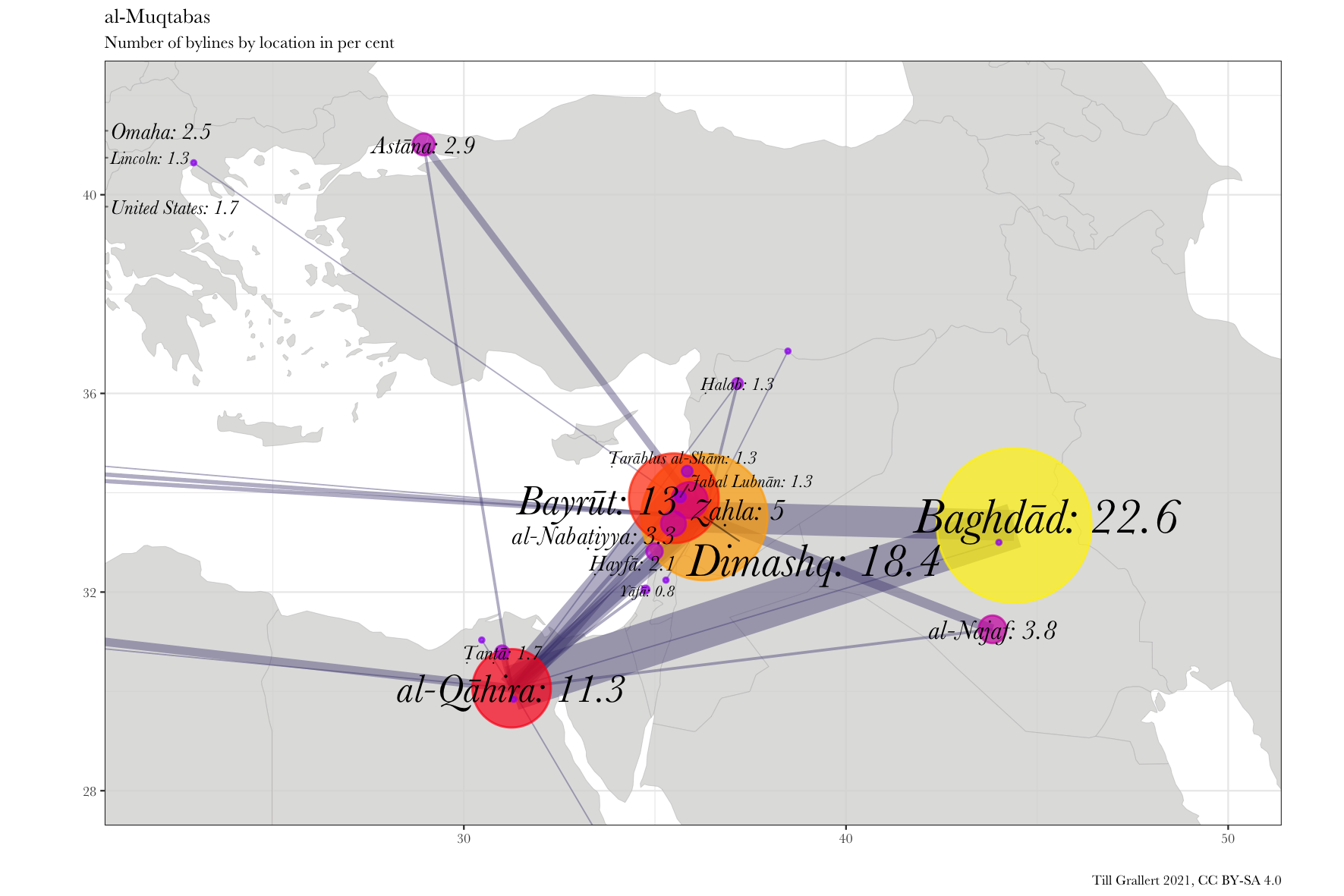
Map: Locations in bylines in al-Muqtabas (Cairo and Damascus)
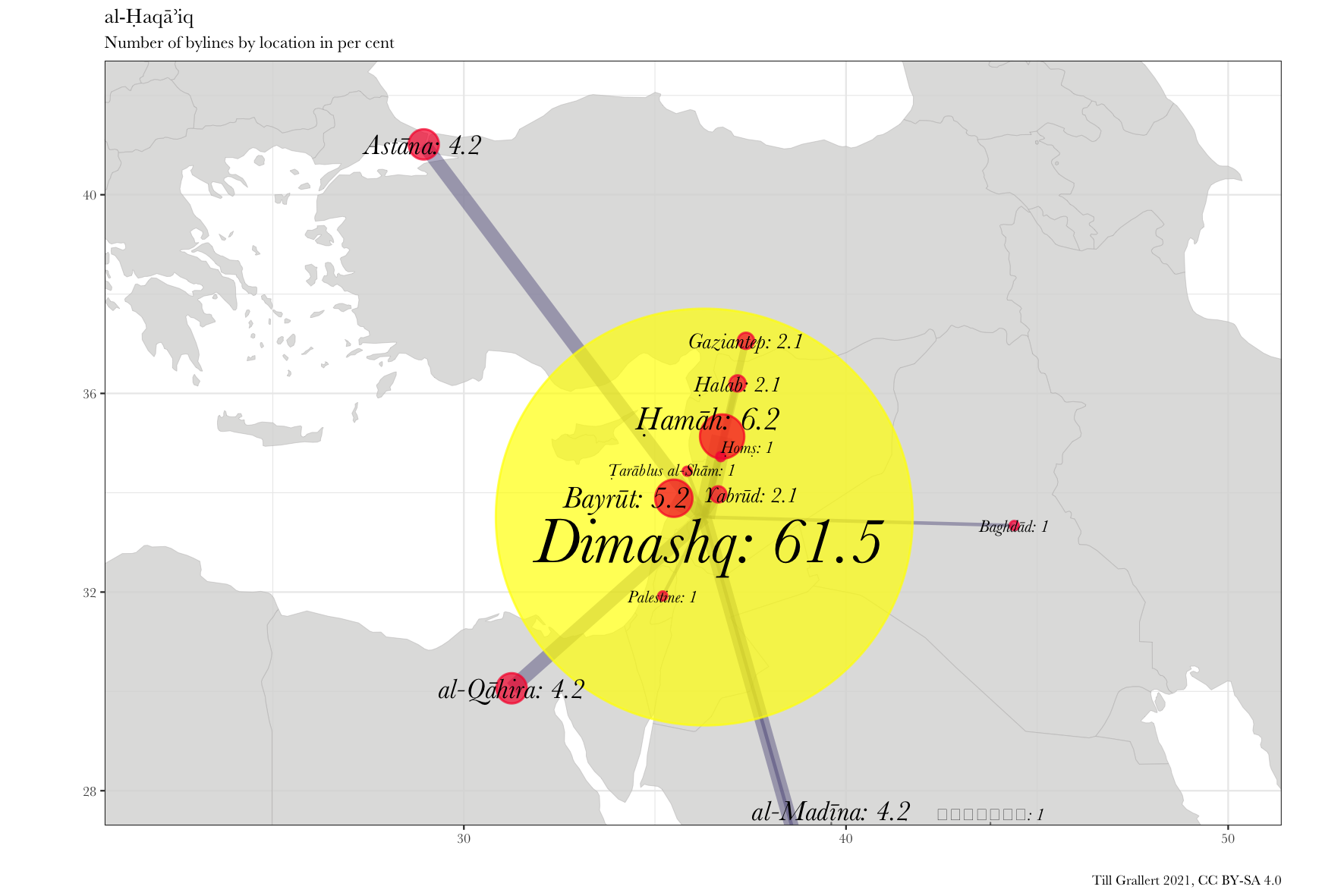
Map: Locations in bylines in al-Ḥaqāʾiq (Damascus)
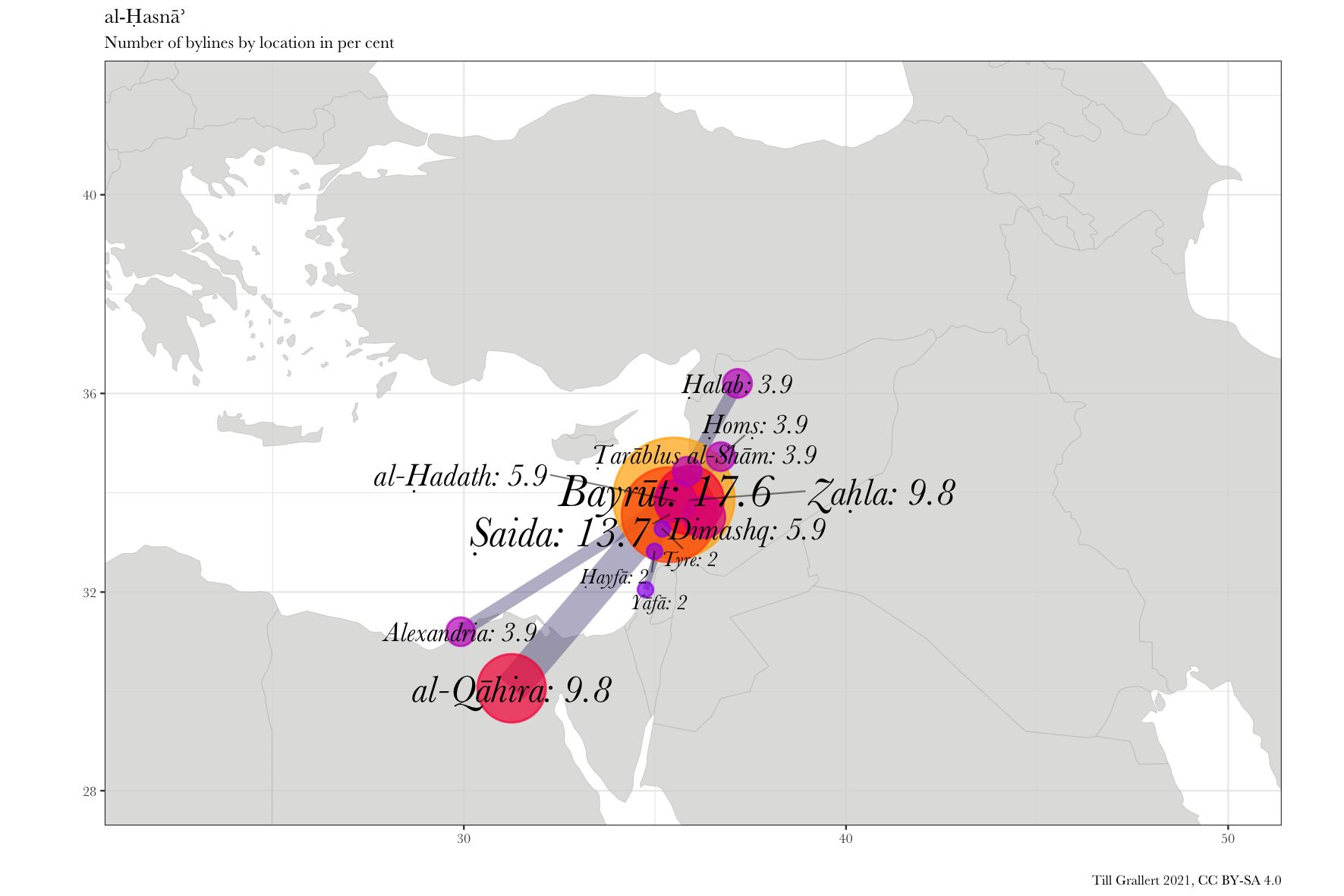
Map: Locations in bylines in al-Ḥasnāʾ (Beirut)
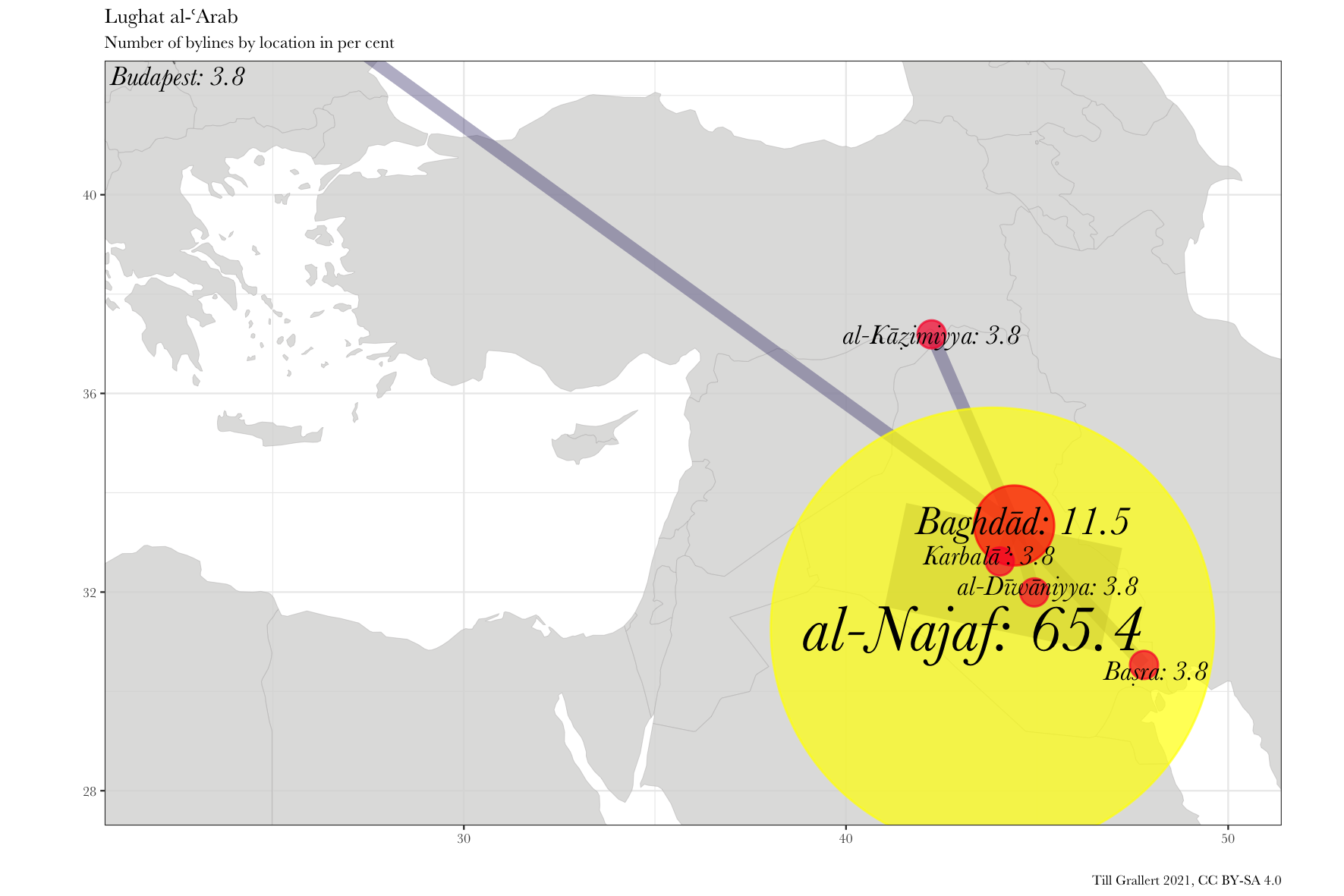
Map: Locations in bylines in Lughat al-ʿArab (Baghdad)

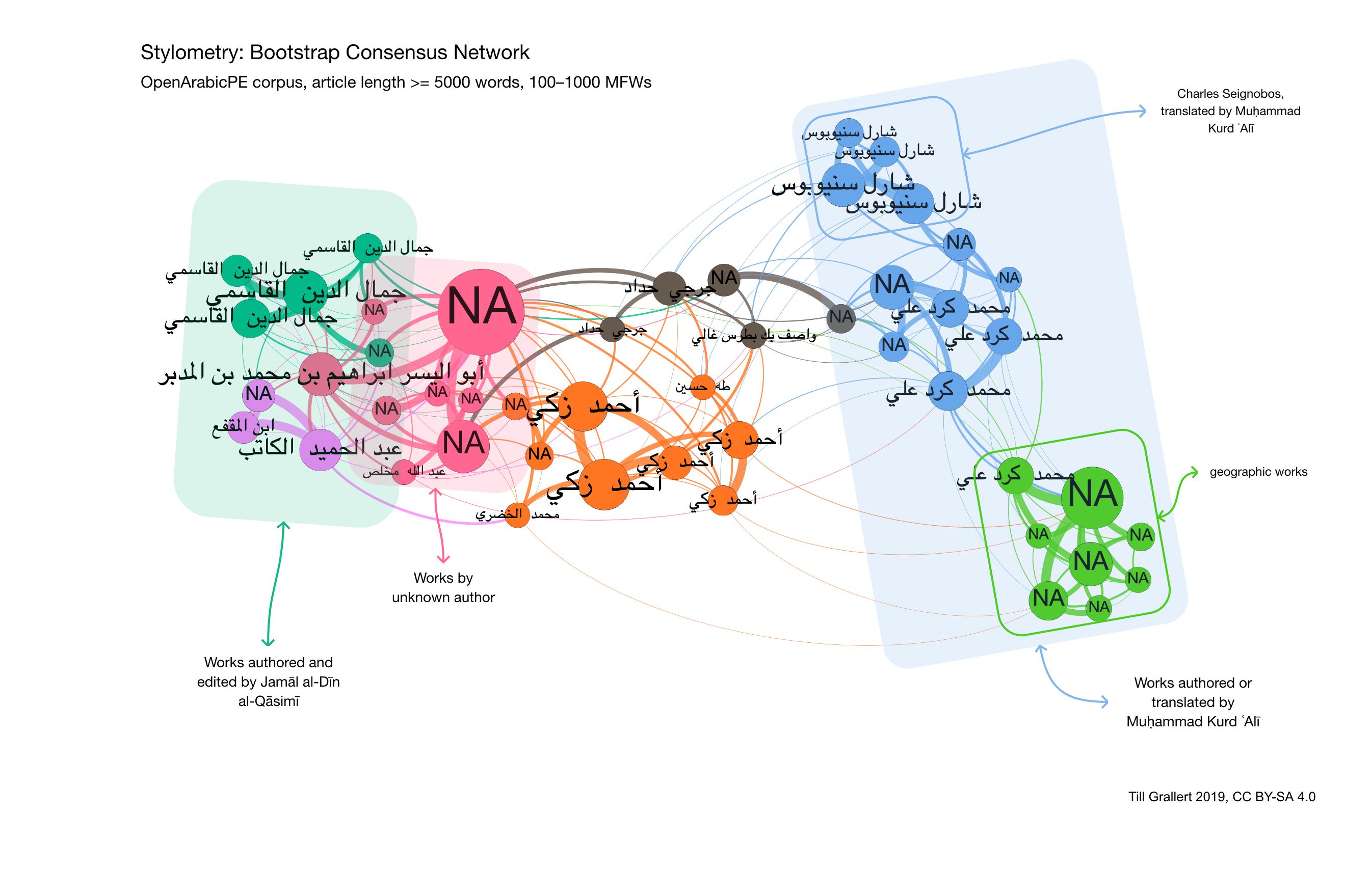
Figure: bootstrap consensus network of articles (length >= 5000 words, 100–1000 MFWs), colours by modularity group
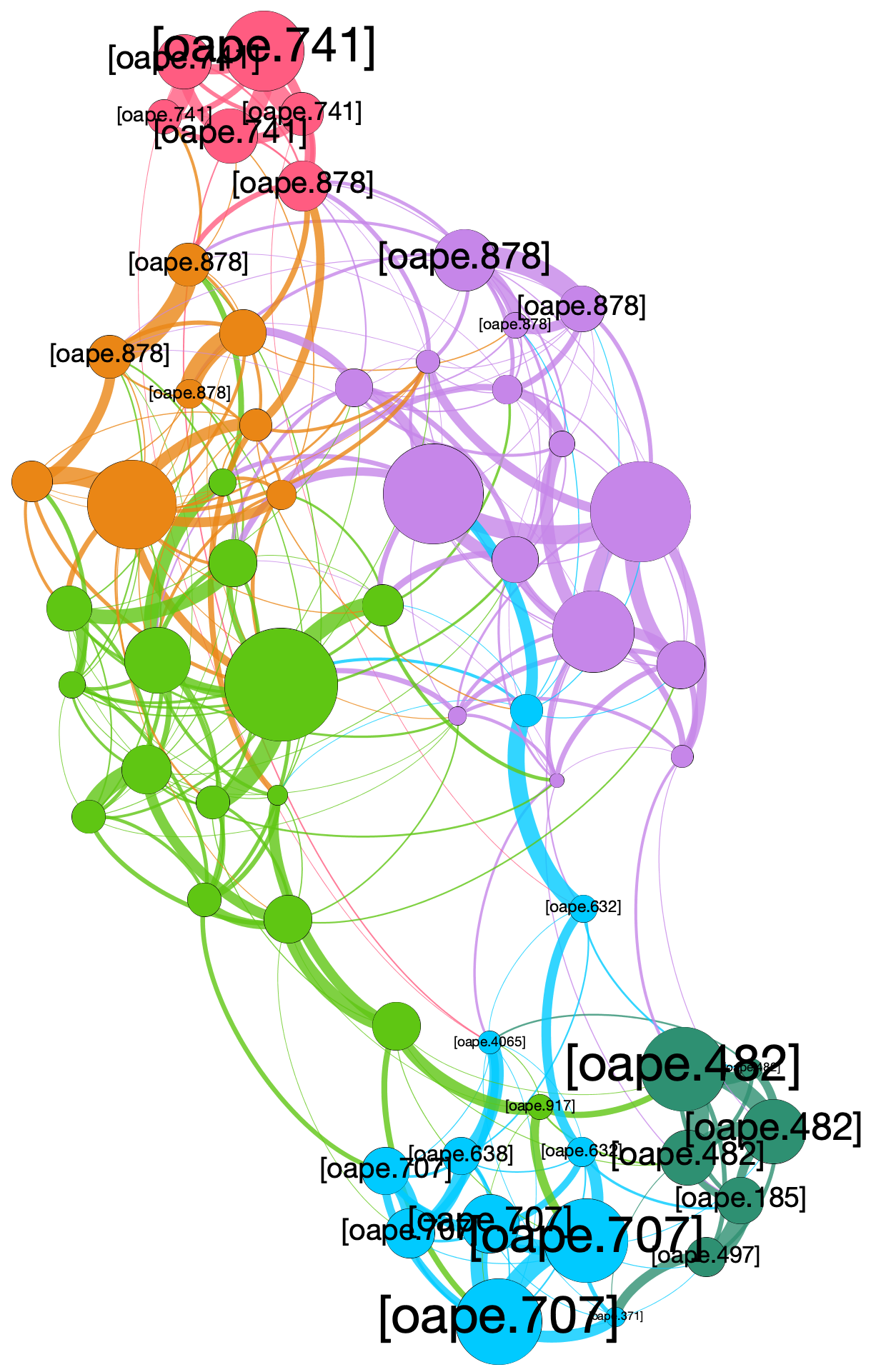
Figure: bootstrap consensus network of sections and articles (length >= 5000 words, 100–1000 MFWs) in al-Muqtabas, coloured by modularity
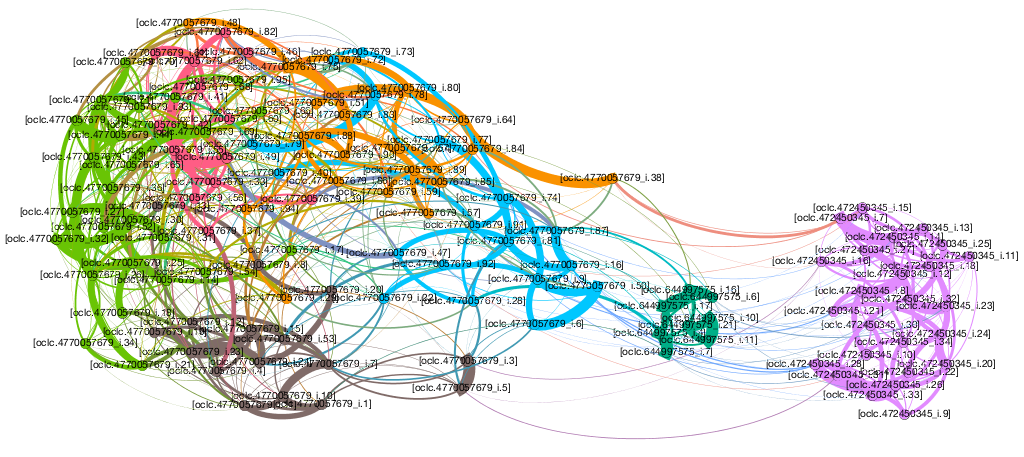
Figure: bootstrap consensus network of sections of articles in 123 periodical issues based on consensus of 100–1000 MWFs, coloured by modularity